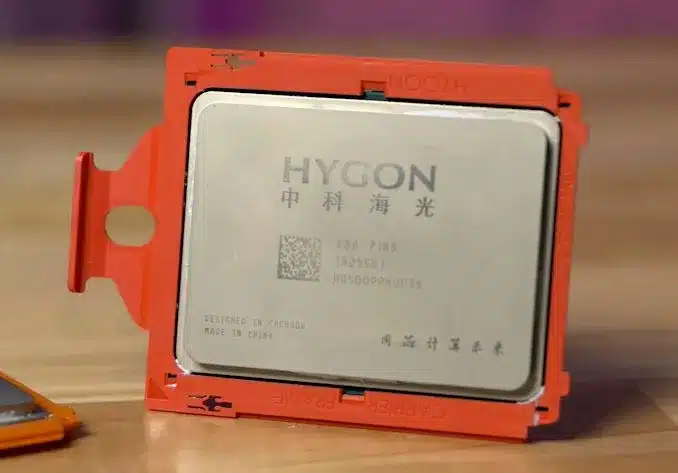Hygon, a Chinese chipmaker utilizing AMD’s original 2017 Zen 1 architecture, continues to face significant performance gaps compared to modern mainstream CPUs. The company’s reliance on older technology stems from its partnership with AMD, which allows it access to x86 and SoC IP licenses for localized production. However, U.S. sanctions have restricted Hygon to this outdated architecture, limiting its ability to compete effectively.

The Hygon C86 3185, launched in 2020, features eight Zen-based cores with simultaneous multithreading (SMT), a 3.4GHz boost clock, and 16MB of L3 cache. Despite these specifications, it lags significantly behind AMD’s newer Ryzen 5 5600X, which boasts Zen 3 cores, a 7nm process, and a higher 4.6GHz boost clock.
Benchmark Results: Two Hygon CPUs vs. One Ryzen 5 5600X
Recent tests by Chinese YouTuber EJ Hardware compared two Hygon C86 3185 processors against a single AMD Ryzen 5 5600X. The results highlight the challenges Hygon faces:
- In single-core performance, the Ryzen 5 5600X outperformed the dual Hygon CPUs by 97%-135% in Cinebench R20 and R23 tests.
- In multi-core benchmarks, the dual Hygon CPUs exceeded the Ryzen 5 5600X by 12% —13% despite doubling the core count.
- In Geekbench’s AI benchmark, the Hygon chips produced abysmal results, falling short of Intel’s decade-old Skylake-based Core i7-6700HQ in some areas.
Design Constraints and Limitations

The Hygon CPUs are soldered onto server-style motherboards, restricting their versatility and memory compatibility. Performance is further hindered with DDR4-1866 memory. Despite the multi-core advantage provided by dual-CPU configurations, Hygon chips struggle with single-core latency and fail to keep up with the instruction sets of modern CPUs, such as AVX-512.
Legacy Architecture in a Modern Landscape

Hygon’s reliance on Zen 1 technology limits its ability to deliver competitive generational improvements. The company’s strategy to boost performance by adding more cores is insufficient for addressing modern computational demands, where single-core efficiency and instruction set innovations are critical.
While Hygon’s focus remains on creating self-reliant technology for the Chinese market, the performance of its CPUs underscores the challenges of depending on outdated architecture in an industry that thrives on innovation.


